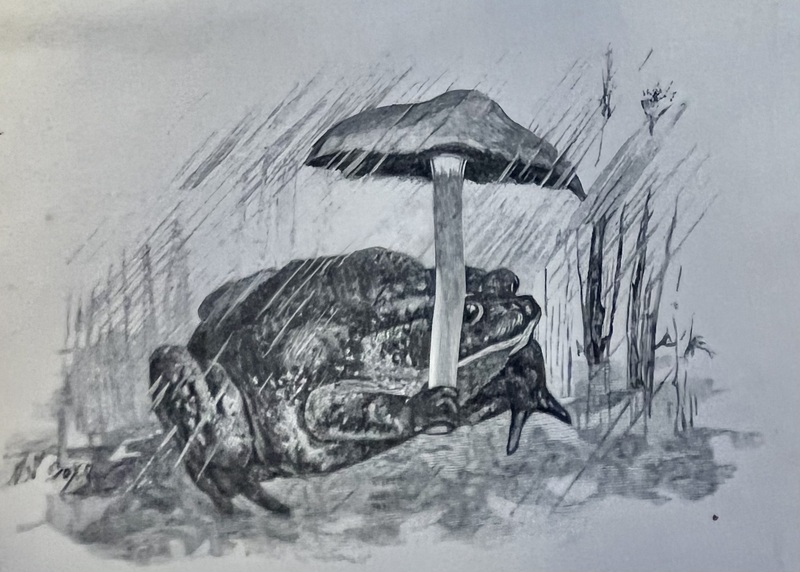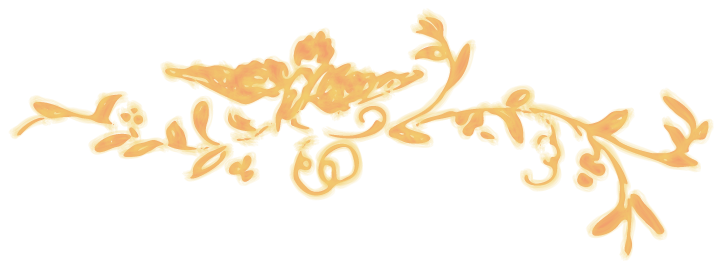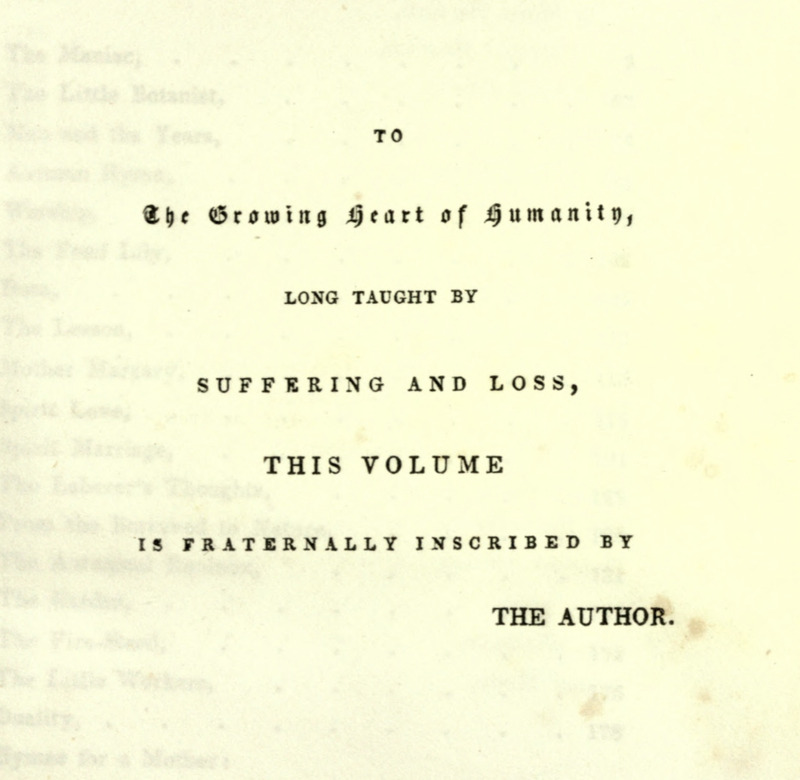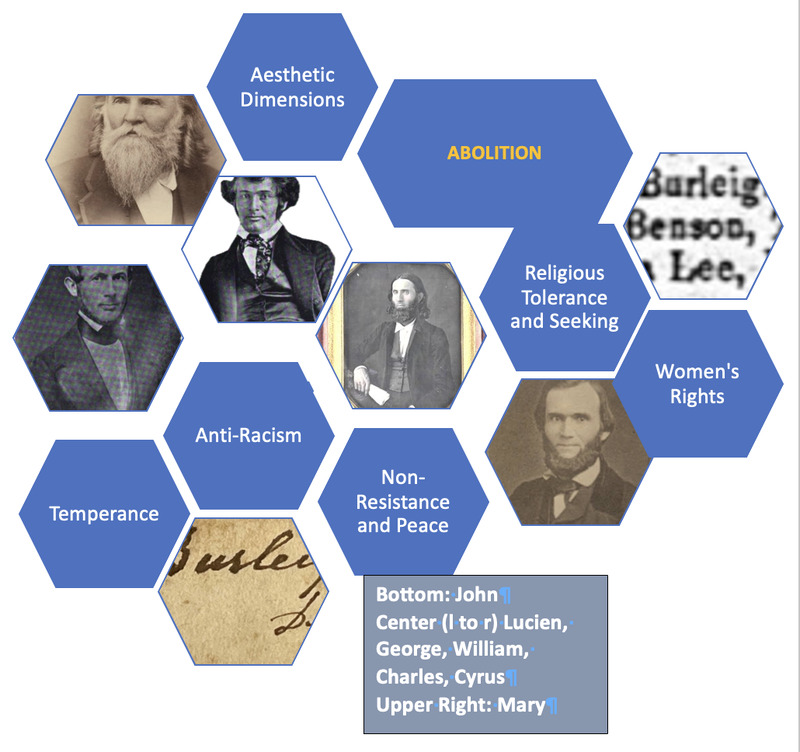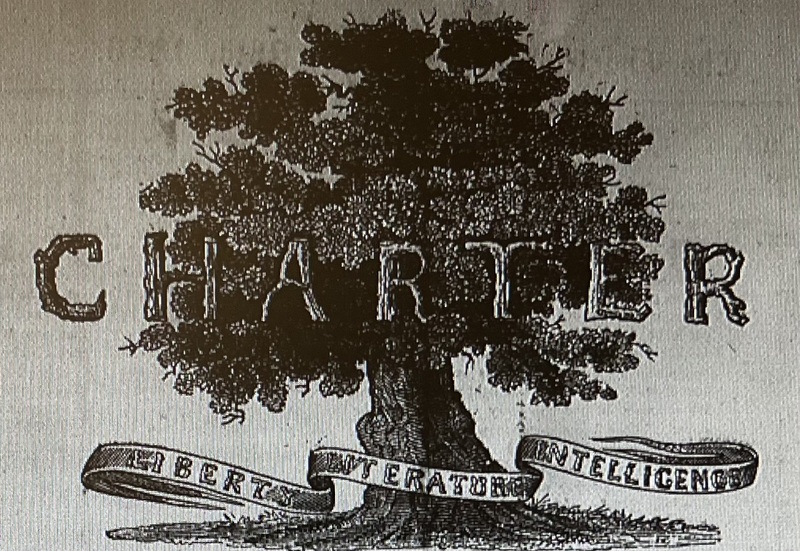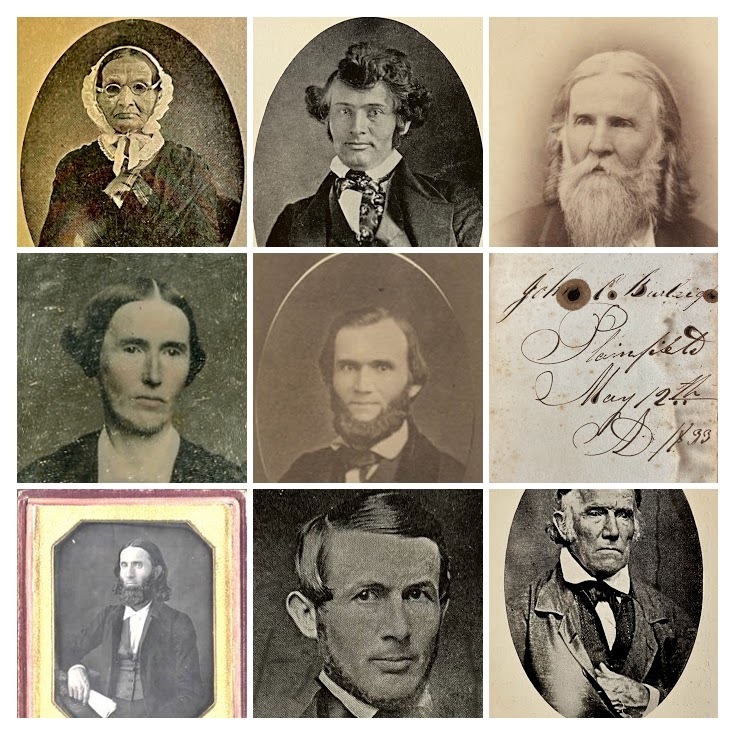Why the Burleigh Family? Why Now?

This site presents an extraordinary family.
One family - two parents, seven siblings, and their children. All were dedicated to reforming human society, most particularly in the struggle to abolish slavery and ensure equality to all people. The Burleigh family members conducted their reform activities with an eye to aesthetic, moral, and spiritual principles, as exemplified in their essays, poetry, and, in later generations, visual art works. They were white Americans who celebrated their heritage from the Pilgrims, but used that legacy as a goad to improve and perfect the nation they had inherited. The seven siblings of the core generation all spent significant years of their lives in Abolitionist work and a wide range of other reform movements. And more convincingly than many white Abolitionists, they sustained an anti-racist politics that acknowledged Black people as colleagues, leaders, students, and political actors; they were pro-feminist and early advocates of women's rights and suffrage campaigns. The Burleigh family were "woke" white activists, within the context of the nineteenth century. Therefore, their successes and shortcomings can be instructive now, especially for white people who seek to be allies in anti-racist struggles.
For scholars and specialists, the gathering and collation of the widely scattered materials on the Burleigh family fills a noticeable gap in the history of the Abolition movement, and in nineteenth-century reform more generally. The Burleigh names are omnipresent in Abolitionist writings and chronicles (as will become apparent when studying their timelines), but secondary literature that focuses on them is woefully thin. This archive seeks to make materials by and about this family accessible, while also presenting a deep level of detail for scholars. Local historians, for instance, should be able to search their town, state, or county to see if one of the Burleigh brothers spoke there. Social historians can see how a high-profile family was strained by the Abolitionist faction fight of the 1840s that resulted in organizational splits. Both the omnipresence of women's voices, and the growth in an articulated feminism, are reflective in the extraordinary women whom the brothers married.
For general readers and students, the timelines, stories and newspapers illustrate the high level of commitment by leaders and supporters in the Abolition movement. At least three of the siblings - Charles, William and George - could have attained far greater fame in conventional fields in their own lifetimes if they had eschewed reform. But instead they embraced the goal of realizing a better America and a better world. While some of their notions of what would constitute a "better" world may seem quaint or utterly wrong-headed now (e.g. temperance, anti-Masonry, Bible tract societies), the fact remains that their primary goals of eradicating slavery and ensuring equal rights sustained them as individuals and as a family for over forty years.
Topics and Themes
This website focuses on the Burleigh family. Their myriad activities, over multiple generations, provide a prismatic approach to studying history in all of its dialectic complexity. Digital Humanities provides the best medium for this material, because it allows for the sprawling complexity of over a dozen life stories, and a similar number of social movements, to be organized in a way that allows each individual user to choose the area(s) of most interest to them.
The inspiration for this site came from noticing the lived anti-racist activities of the Burleigh family. At a time when even committed Abolitionists hesitated to be seen in public with their African-American acquaintenances, the Burleigh siblings were in daily contact with the Black students of the Canterbury Female Academy. Later in their Abolitionist careers the Burleighs would go on lecture tours with their Black colleagues. Altogether they establish an anti-racist legacy, from this one particular white family. They made some mistakes and missteps, but their commitment and actions were appreciated.
While the theme of anti-racism formed the ground of the project, it is also the case that one can follow many additional threads that will address these topics, among others:
1. the relation between political action and artistic expression;
2. the interactions between reform movement causes in the nineteenth-century;
3. how internal disputes among those fighting for a similar cause can occur, can be enflamed or relieved;
4. networks of people established by incidents, geographic proximity, and shared causes;
5. the internal life of a revolutionary moment in American history, told through one family's journey;
6. nineteenth century print culture, and its relation to advertising, poetry, and graphics.
This home page provides the basic presentation of the family, with links to who they are, why they are important, and an outline of each person's life. Full bibliographies, time lines, and more are under development.
Chapters in the Family History, and Thematic Pages
- These two sections provide background and excerpts, in two different ways. The Family History section is a chronological overview of the family members across the three principal decades of the Abolition movement - 1830s, 1840s, and 1850s - followed by a chapter on the 1860s and later. The Thematic section examines specific issues, ideas, and questions.
- Among the original scholarly resources available in the thematic pages, the article on the newspapers edited by the Burleighs is new in both its range and completeness. The Burleigh project team is reading through all of the newspapers edited by family members, as well as reading other contemporaneous publications for mention of the Burleighs.
The Sixteen Burleigh Family Members Profiled in this Project
- Each page contains basic biographical information, analysis of the person's role in Abolition and other reform causes, major accomplishments, a detailed time line of their lives, and a bibliography with links to online materials and transcriptions. In the case of the visual artists, this includes examples of their work.
- The Parents: Rinaldo and Lydia Bradford Burleigh
- Mary Frances Burleigh: The Only Sister
- John Oscar Burleigh: The Oldest, But Least Famed Brother
- Charles Calistus Burleigh: An Unkempt but Powerful Force for Abolition
- William Henry Burleigh
- Lucien Rinaldo Burleigh
- Cyrus Moses Burleigh
- George Shepard Burleigh
- Gertrude Kimber Burleigh
- Celia Burleigh
- Margaret Jones Burleigh
- Ruth Burgess Burleigh
- Charles Calistus Burleigh, Jr.
- L. R. Burleigh Jr.
- Sydney Richmond Burleigh
SCHOLARLY DIMENSIONS OF THE BURLEIGH PROJECT:
Methodology, Features, and Scholarly Articles
The Burleigh Family site is meant for both scholars and general interest readers. Scholars will find copious references, bibliographies, catalogues of published works, and references to specific figures, places, movements, and events that together provide a rich context for understanding a family of white activists like the Burleighs.
Methodologically, the Burleigh team draws from a wide tool-box of approaches - artistic, literary, historical, political, and demographic. There are also elements of a prosopographic approach - gleaning a fuller picture of the family from the fragments retrieved for each member. This is especially important because the details available for family members vary dramatically. Prosopographic methods are often used in reconstructing the history of women and of marginalized people more generally.
Scholars will recognize that extensive archival work has been done here. One of the goals of the site is to make material on the Burleighs easier to access and to find, so that future scholars will not have to reinvent this wheel. We sincerely hope, too, that scholars will be able to make further contributions, as more materials on the Burleighs are uncovered.
Scholars who are interested in submitting their own original essays on the Burleighs are encouraged to contact the Burleigh team. All reasonable offers will be given attention.
☞Assistance Requested!☜
The Burleigh Family project could use assistance from enterprising graduate students or independent scholars who study Nineteenth-Century American Poetry (students of English or American Studies), as well as students of late-nineteenth century painting and lithography (students of Art History and Design).
The work will be published on this site, which is sponsored by San José State University.
To reach Dr. Jennifer Rycenga, member of the Burleigh research team, you can email her at jennifer.rycenga@sjsu.edu
